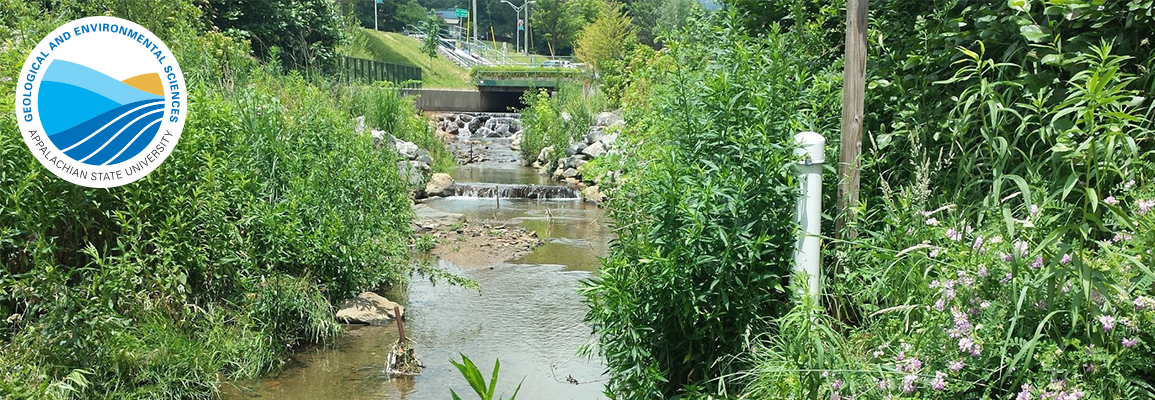At Appalachian State University, we take pride in our commitment to sustainability and our environmental stewardship of the rivers and streams in the beautiful Blue Ridge Mountains where we live. But how environmentally friendly are we really?
 Dr. Bill Anderson talks about his research with undergraduate students on Boone Creek, the stream that flows through the ASU campus. Although we tend to think of streams in the High Country to be relatively pristine, his research over the past ten years has demonstrated that two parameters critical to the habitat of cold-water species, temperature and salinity, are regularly compromised in Boone Creek. The linked pages detail the problems with these stream water-quality parameters.
Dr. Bill Anderson talks about his research with undergraduate students on Boone Creek, the stream that flows through the ASU campus. Although we tend to think of streams in the High Country to be relatively pristine, his research over the past ten years has demonstrated that two parameters critical to the habitat of cold-water species, temperature and salinity, are regularly compromised in Boone Creek. The linked pages detail the problems with these stream water-quality parameters.
Temperature fluctuations in Boone Creek
Salinity fluctuations in Boone Creek
Dr. Bill Anderson is a hydrogeologist and civil engineer who analyzes groundwater-surface-water interactions, particularly in riparian (stream-side) and coastal aquifers. In riparian aquifers, his research has paid special attention to stream and groundwater temperatures and salinity, especially during times of high runoff, or flash flood, conditions. His work with students in the Department of Geological and Environmental Sciences over the past ten years has shown that the health of Boone Creek could be significantly improved by better controlling the sources of heat and salinity in the designated trout stream.
